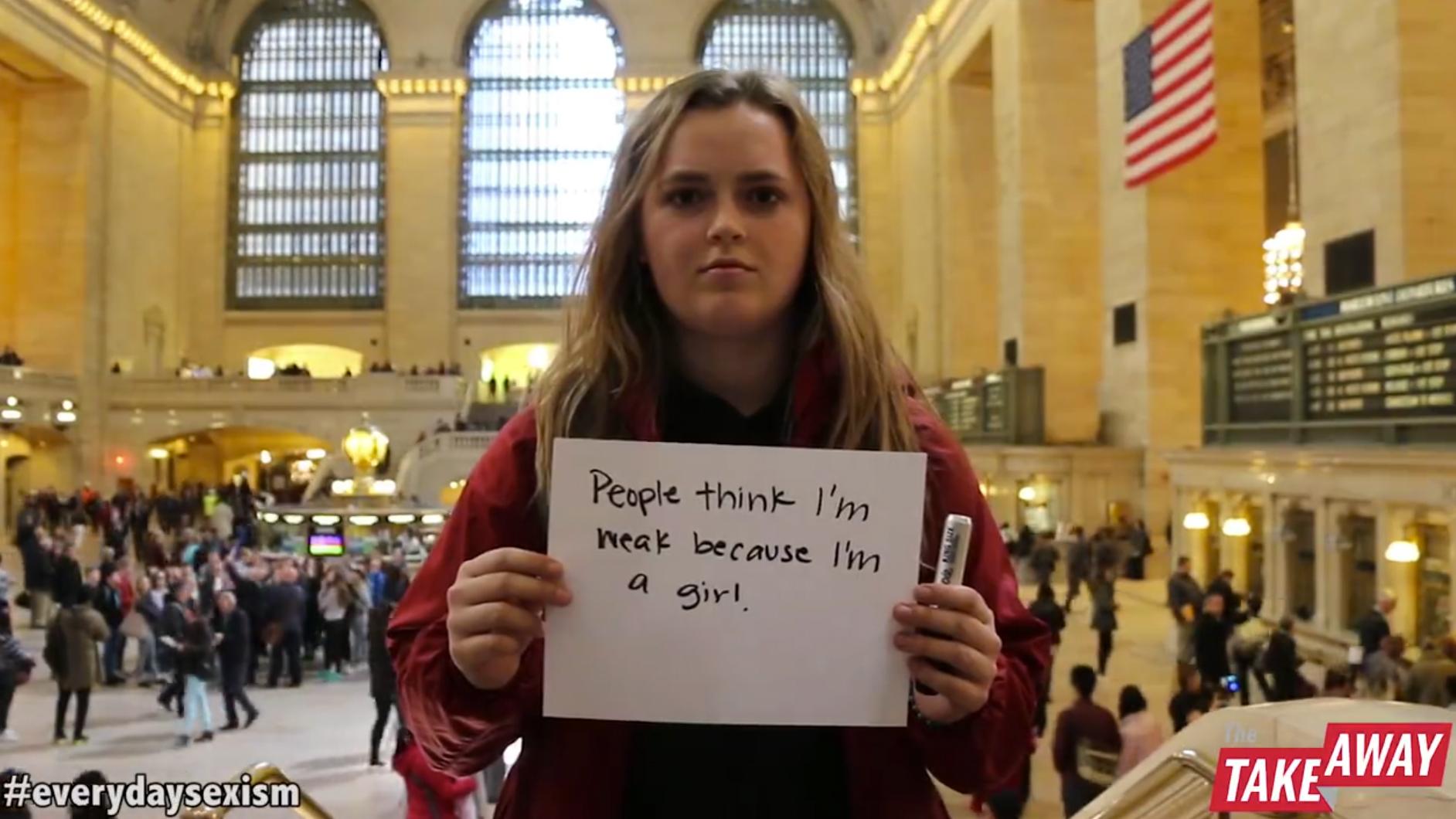How the #EverydaySexism project empowers women
The 21st century has been an awakening on many levels. While the feminist movement continues to gain steam, the idea of true gender equality remains an abstraction. It’s a simple truth that the Everyday Sexism Project is trying to capture.
With more than 100,000 stories, the project has turned into a worldwide phenomenon. British Author Laura Bates started this initiative back in 2012 to chronicle real experiences with daily, normalized sexism — from street harassment and workplace discrimination, to sexual assault and rape.
“People didn’t realize that this was something that’s occurring every day,” she says. “When I tried to talk about gender inequality and sexism four years ago, people said to me, ‘No, sexism doesn’t exist anymore. Women are equal now — there is no problem.’ So the term ‘Everyday Sexism’ was partly born out of frustration.”
When Bates began the project, she spoke with hundreds of women and girls about their experiences with sexism. Some had experiences that began before birth.
One woman found out “that when her mother had her first sonogram, her father’s response was, ‘Oh God they’re twins, and they’re also both girls’ — like that was a kind of disaster,” Bates says. “We heard the other day from the mother of a toddler who was 3 years old. This little girl picked up a stethoscope at a playgroup, and immediately, one of the other parents swooped in and said, ‘Oh look, you’re going to be a nurse.’”
Bates says that even pre-teen girls have reached out to the Everyday Sexism Project to share stories of sexism and harassment.
“I think it’s absolutely shocking,” she says. “These girls are so young, and they’re in their school uniforms quite often, and they’re on their way to school, and they’re being shouted at in the street, they’re being groped, they’re being touched, they’re being followed and approached. It’s really a big shock to recognize just how early this is starting."
Though the issues of street harassment and sexism are incredibly complex, Bates says that part of the problem can be linked to chronic sexualization in the media. Women are three times more likely than men to take their clothes off in major Hollywood films, and they also only get about 28 percent of speaking roles in films. A lack of agency and control over the message could be to blame about — 90 to 95 percent of Hollywood directors are men.
“I don’t think there is inherently a massive problem with the idea of showing a naked woman in a film — I think that can be done in a very empowering and feminist way,” she says. “But I think that it becomes a problem when we’re only showing a woman’s naked body in a film and we’re not giving her any lines alongside it, but we’re just putting her in there as a sex object.”
Using the female body as marketing tool or movie prop can have real world consequences that extend beyond the life of a promotional campaign or film run.
“Let’s look through the other end of the telescope and recognize that 80 percent of 10-year-old girls in America have dieted to lose weight,” Bates says. “From such a young age, we tell them your body is what you are — your body is expected to conform to an incredibly narrow, sexist, racist media ideal of what we consider the perfect body to look like. We tell them this from such a young age that they take that in, and this is what women are told what they are.”
Obviously, this isn’t just a problem in the United States, something Everyday Sexism has learned as it’s expanded across Europe, South America, Asia and parts of Africa.
“When we first started expanding internationally and women in different countries started their own branches of Everyday Sexism, I thought that we’d be seeing really clear kind of tropes,” Bates says. “In reality, that hasn’t really been the case. What’s been really striking has been the similarities between the stories, and the ubiquity, I think, of some common themes wherever you are in the world.”
But solving the problem of harassment, sexism and violence against women is a decades-old struggle that goes beyond media. Many that are resistant to this feminist movement say that women in the US and the United Kingdom are “lucky” and don’t know “how good we have it,” Bates says.
“It’s just so interesting that we respond in that way to something that, if it were a different kind of crisis, would be considered an epidemic,” Bates says. “The number of American troops killed in Afghanistan and Iraq between 2001 and 2012 was 6,488. The number of American women who were murdered by current or former male partners during that time was 11,766. We know that three women are killed every day, on average, by a current or former partner in the US. We know that 1 in 4 women experiences domestic abuse, and that hundreds of thousands of women are raped.”
Bates adds that the United States shouldn’t ignore its blindspot when it comes to sexism, or violence against women.
“We want to look elsewhere and say, ‘Oh look what women are dealing with over there,’” she says. “We’re not so keen to reflect on the real crisis of violence against women that we’re experiencing on our own doorsteps as well.”
We want to hear your feedback so we can keep improving our website, theworld.org. Please fill out this quick survey and let us know your thoughts (your answers will be anonymous). Thanks for your time!
